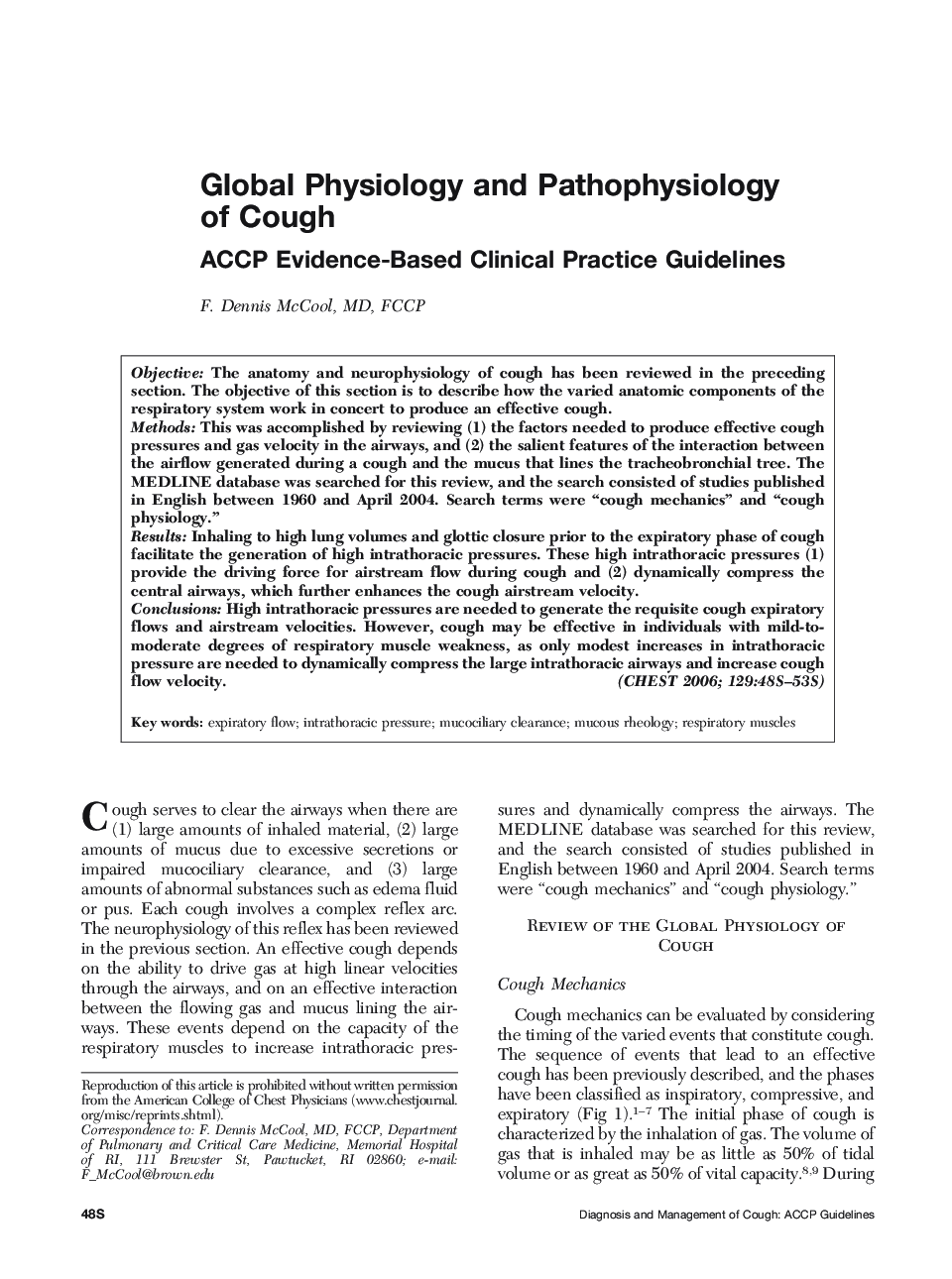| Article ID | Journal | Published Year | Pages | File Type |
|---|---|---|---|---|
| 2906866 | Chest | 2006 | 6 Pages |
Objective:The anatomy and neurophysiology of cough has been reviewed in the preceding section. The objective of this section is to describe how the varied anatomic components of the respiratory system work in concert to produce an effective cough.Methods:This was accomplished by reviewing (1) the factors needed to produce effective cough pressures and gas velocity in the airways, and (2) the salient features of the interaction between the airflow generated during a cough and the mucus that lines the tracheobronchial tree. The MEDLINE database was searched for this review, and the search consisted of studies published in English between 1960 and April 2004. Search terms were “cough mechanics” and “cough physiology.”Results:Inhaling to high lung volumes and glottic closure prior to the expiratory phase of cough facilitate the generation of high intrathoracic pressures. These high intrathoracic pressures (1) provide the driving force for airstream flow during cough and (2) dynamically compress the central airways, which further enhances the cough airstream velocity.Conclusions:High intrathoracic pressures are needed to generate the requisite cough expiratory flows and airstream velocities. However, cough may be effective in individuals with mild-to-moderate degrees of respiratory muscle weakness, as only modest increases in intrathoracic pressure are needed to dynamically compress the large intrathoracic airways and increase cough flow velocity.
